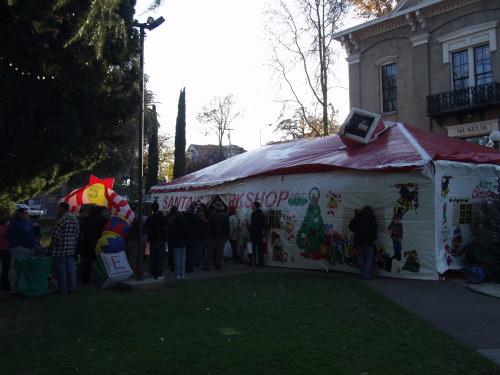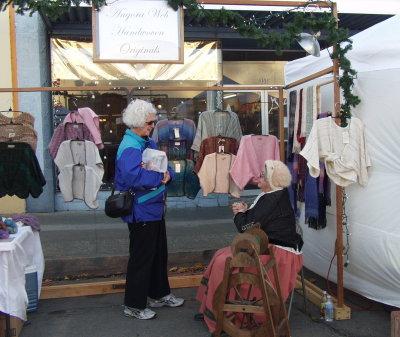- Elizabeth Larson
- Posted On
Sonoma County family killed in Saturday crash; Lakeport teen involved in collision
SONOMA COUNTY – A Sonoma County family died and several others were injured when a local teenager allegedly ran a red light late Saturday, setting off a four-car collision.
The crash occurred at 9:21 p.m. Saturday on eastbound Highway 37 at Reclamation Road in Sonoma County, according to California Highway Patrol Officer Scott Cakebread.
The CHP would not release the names of the fatalities or the driver of the car that hit them to Lake County News, although Bay Area media reported receiving the names from the agency.
The family that died included 45-year-old John Maloney and his wife Susan, 42, of Sonoma and their children Aiden, 8, and Grace, 5.
The man who hit them was identified as Steven Culbertson, 19, of Lakeport.
Conflicting reports were being given about the status of Culbertson, who Cakebread said was transported by helicopter to Santa Rosa Memorial Hospital.
While some media were reporting Culbertson died Sunday, on Sunday evening Santa Rosa Memorial spokesperson Katy Hillenmeyer said Culbertson was in critical condition. Lake County News could not reach Culbertson's family late Sunday.
Culbertson allegedly was driving a silver Mini Cooper at speeds of more than 90 miles per hour when he ran a red light and hit a Honda CR-V driven by Thomas Graham, 61, of Petaluma, the CHP reported.
The Mini Cooper then hit the Nissan Quest mini van driven by the Maloney family, the CHP said. The Quest then hit a Mitsubishi Galant driven by Carrie Rodriguez, 52, of Novato.
All of the members of the Maloney family were pronounced dead at the scene, Cakebread said.
Rodriguez and her passengers – Liberty Rosario, 42, of Fairfield and Adelaida Nicholas, 53, of Novato – were transported to area hospitals with minor injuries, according to the CHP. Graham and his passenger, James Parker of Stockton, were uninjured.
The CHP said the eastbound lane of Highway 37 was shut down just after 10 p.m. Saturday. At 11:25 p.m. the both directions of Highway 101 to Highway 27 were closed, as were Atherton Avenue to Highway 37 and the stretch of Highway 37 between Highway 131 and Lakeville.
The roadways remained closed until 7:30 a.m. Sunday as the investigation took place. Lakeville Road was shut completely, with travelers urged to take an alternate route. The vehicles involved in the crash were cleared from the scene at around 7 a.m., according to the CHP.
The CHP reported that several vehicles had gone through the closure at high speeds early in the morning.
Caltrans and the Sonoma County Coroner were called to the scene, according to the CHP report. A Caltrans boom truck was requested to assist the CHP with taking aerial photos of the crash scene.
Cakebread said the CHP's Major Accident Investigation Team (MAIT) – which is called out to investigate collisions where two or more deaths are involved – was working on the crash Sunday.
The social networking site Facebook provided information about some of those involved in the crash.
Culbertson's Facebook page said he was a 2008 graduate of Clear Lake High School, with aspirations of being a professional driver and mechanic. It also featured pictures of him driving on race course.
John Maloney's page featured pictures of him, his wife and his young children. While his profile was open to the public, his wife's was not.
He was a 1986 graduate of the University of Georgia, where he received a bachelor's degree in journalist before going on to receive a master's degree in humanities from Dominican University in San Rafael.
Maloney worked at SolarCraft, a solar services company with offices in Novato and Sonoma. SolarCraft's Web site listed Maloney as the company's vice president of sales and marketing, and noted that he had three children.
He noted in an August message to a friend on Facebook that his older daughter, Molly, was heading off to the University of Wisconsin this fall.
Friends left messages on the Facebook page over the weekend in remembrance of the family.
“John and Susan, Aiden and Grace. We all love you and miss you terribly. No words can convey the sorrow we feel at your loss. RIP 11/28/1009,” wrote Ben Delaney.
“Dearest Maloney Family - My heart breaks at the loss your friends and family are feeling right now ... My best wishes go out to them, and perhaps some peace can come from them knowing that you are and always will be together. Much ♥,” Shannon Greene wrote hours after the fatal crash.
E-mail Elizabeth Larson at This email address is being protected from spambots. You need JavaScript enabled to view it. . Follow Lake County News on Twitter at http://twitter.com/LakeCoNews and on Facebook at http://www.facebook.com/pages/Lake-County-News/143156775604?ref=mf .



















